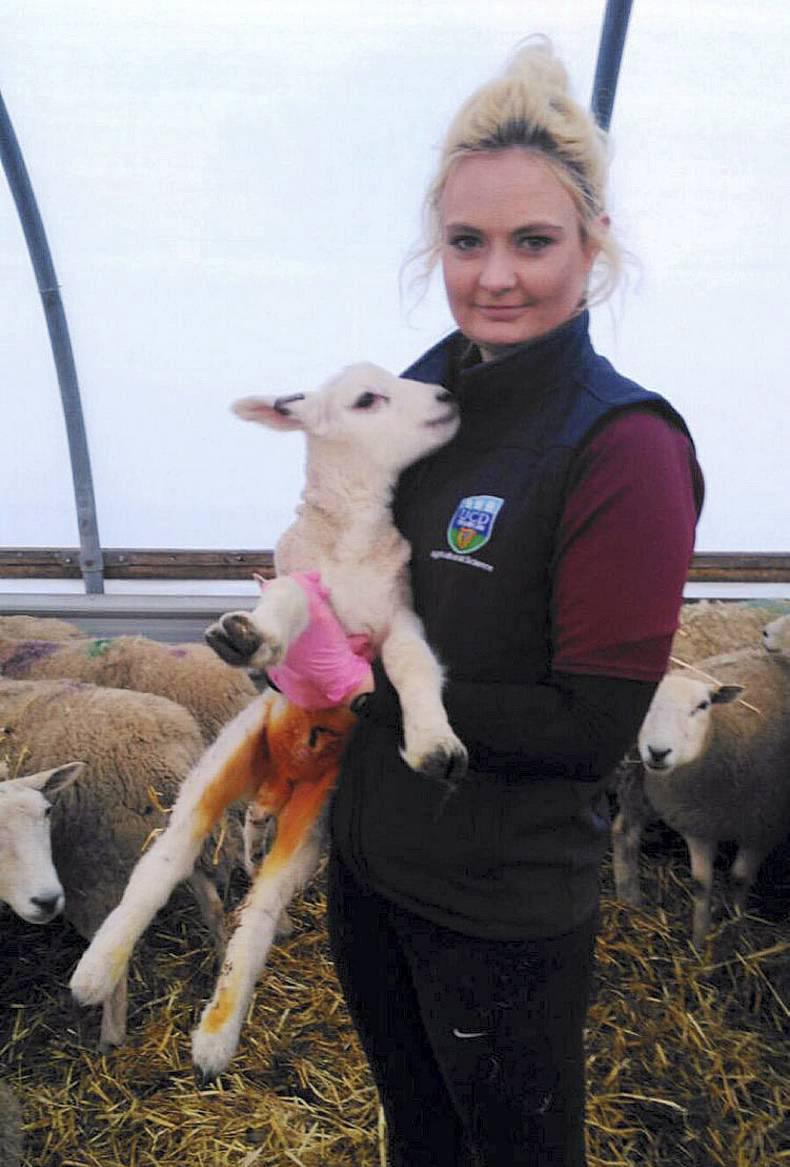I’m now in the last week of my sheep placement. This week, we were concentrating on marking up the pairs of lambs and ewes.
The lambs are sprayed with the same numbers as their mothers. The numbers are used as an indicator that they are matched to the right ewe when they are in the field.
Before we load the sheep into the trailer, we check the lambs to see if they are receiving enough milk. We also check the ewe’s milk and feet.
Before we loaded the ewes, we took pictures of the new stock for the farm’s website .
We then unloaded the trailer in the field and paired the ewes and lambs one at a time. This is to avoid mixing them up and to reduce stress for the lambs.
The Fort family were delighted with their 200% lambing percentage.
The benefit of management strategies
Beverley started a colostrum trial, testing real and fake colostrum using a refractometer. I found this really interesting as it showed there is a big difference. The composition of the Lleyns’ milk had a very high reading of immunoglobulins.
The Lleyns provide a high amount of extra immunoglobulins and milk compared with other breeds. I was also surprised at how easily the Lleyn ewes lamb with no need for assistance.
I have learned a lot from the teachings of the Fort family, I have made friends for life and may have persuaded them to purchase a few Simmentals.
I will miss the pet lambs and the daily routine of the farm. The Fort family work very hard at implementing their management strategies, which are very beneficial to their large flock size.
I had a brilliant time learning and lambing. I will be soon starting my dairy placement in Scotland, which is on an impressive farm of 500 dairy cows with new ways of feeding.
Jodie McGeever is an animal science student at UCD and travels on the professional work experience programme supported by the Irish Farmers Journal and the Agricultural Science Association.
Read more
Read more of Jodie’s blog here
I’m now in the last week of my sheep placement. This week, we were concentrating on marking up the pairs of lambs and ewes.
The lambs are sprayed with the same numbers as their mothers. The numbers are used as an indicator that they are matched to the right ewe when they are in the field.
Before we load the sheep into the trailer, we check the lambs to see if they are receiving enough milk. We also check the ewe’s milk and feet.
Before we loaded the ewes, we took pictures of the new stock for the farm’s website .
We then unloaded the trailer in the field and paired the ewes and lambs one at a time. This is to avoid mixing them up and to reduce stress for the lambs.
The Fort family were delighted with their 200% lambing percentage.
The benefit of management strategies
Beverley started a colostrum trial, testing real and fake colostrum using a refractometer. I found this really interesting as it showed there is a big difference. The composition of the Lleyns’ milk had a very high reading of immunoglobulins.
The Lleyns provide a high amount of extra immunoglobulins and milk compared with other breeds. I was also surprised at how easily the Lleyn ewes lamb with no need for assistance.
I have learned a lot from the teachings of the Fort family, I have made friends for life and may have persuaded them to purchase a few Simmentals.
I will miss the pet lambs and the daily routine of the farm. The Fort family work very hard at implementing their management strategies, which are very beneficial to their large flock size.
I had a brilliant time learning and lambing. I will be soon starting my dairy placement in Scotland, which is on an impressive farm of 500 dairy cows with new ways of feeding.
Jodie McGeever is an animal science student at UCD and travels on the professional work experience programme supported by the Irish Farmers Journal and the Agricultural Science Association.
Read more
Read more of Jodie’s blog here






 This is a subscriber-only article
This is a subscriber-only article











SHARING OPTIONS: